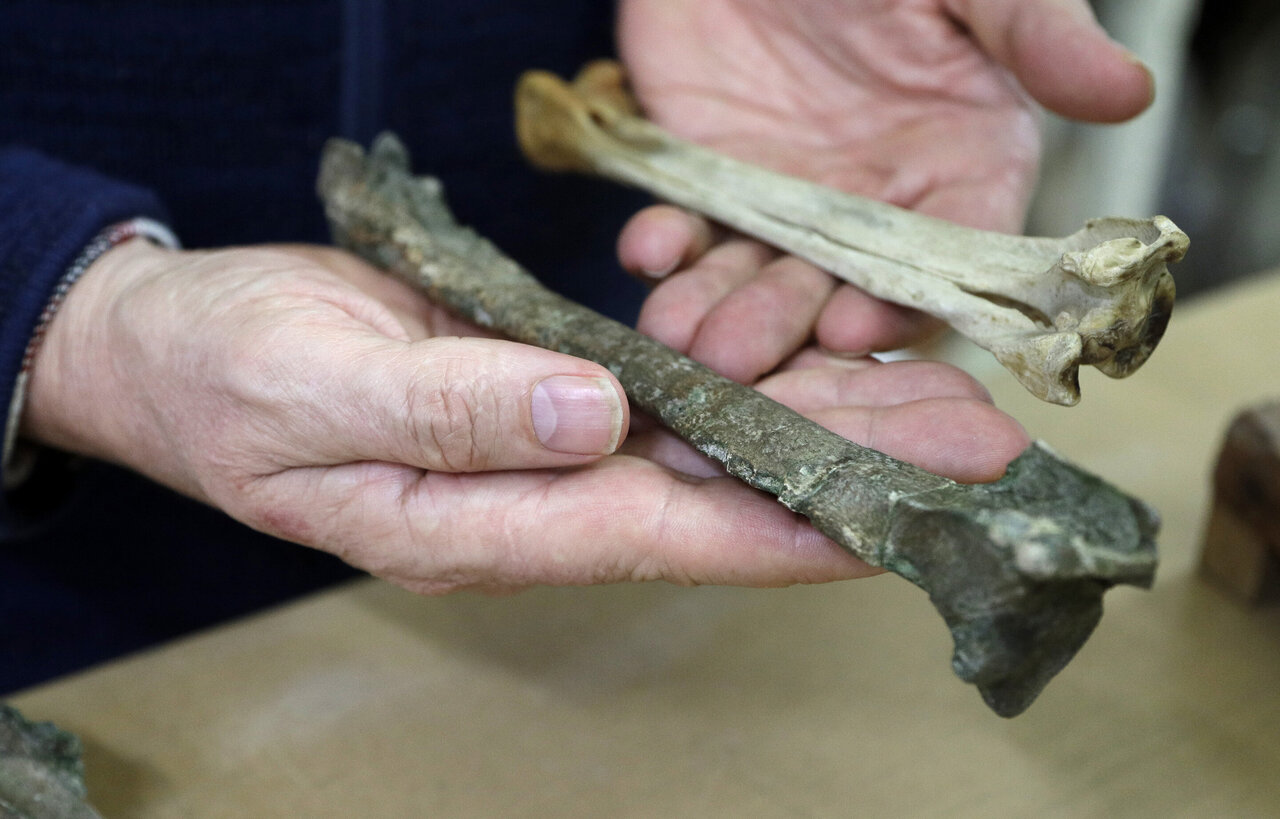Paleontologists unearthed the bones of two new penguin species that lived 50 million years ago.

The largest known penguin to ever waddle the Earth was a 340-pound behemoth—more than three times the size of the largest penguins alive today. The massive, flightless seabird swam in the oceans around New Zealand more than 50 million years ago, according to a study published Wednesday in the Journal of Paleontology.
Scientists unearthed bones from this giant penguin, which they named Kumimanu fordycei, and those of another new species, on a New Zealand beach.
:focal(400x229:401x230)/https://tf-cmsv2-smithsonianmag-media.s3.amazonaws.com/filer_public/97/ca/97ca1f59-9b57-4d73-8ca7-3fafdf037c2c/resized_the-largest-penguin-th.jpg)
“Fossils provide us with evidence of the history of life, and sometimes that evidence is truly surprising,” co-author Daniel Field from the University of Cambridge’s Department of Earth Sciences, says in a statement. “Kumimanu fordycei would have been an utterly astonishing sight on the beaches of New Zealand 57 million years ago.”
Alan Tennyson, a paleontologist at the Museum of New Zealand Te Papa Tongarewa, discovered the fossils between 2016 and 2017 within boulders that had split open from the tide. Alongside the bones of K. fordycei, he found five specimens from a second new species, Petradyptes stonehousei; a fossil from the known giant penguin Kumimanu biceae; and two small humeri from a smaller unnamed penguin species.
Tennyson and his colleagues created models of the bones using laser scanners, which allowed them to compare the fossils to other species of flying and diving birds. Based on the dimensions of hundreds of bones from modern penguins, the team approximated the historic birds’ weight from their flipper size.
Emperor penguins, the largest penguins alive today, weigh between 55 to 100 pounds. Researchers estimated P. stonehousei weighed about 110 pounds. And at roughly 340 pounds, K. fordycei smashed the record for the largest penguin ever, previously held by the 256-pound Palaeeudyptes klekowskii, which lived in Antarctica about 37 million years ago, writes Live Science’s Harry Baker.
Lead author Daniel Ksepka stands next to a cutout of Kumimanu fordycei. The cutout represents researchers’ best guess at the species’ height—but estimation is difficult without leg bones, so the team did not include it in the paper. Daniel Ksepka via TwitterReport an ad
In stark contrast to the more diminutive penguins of today, several species of giant penguins populated Australia and New Zealand after the dinosaurs went extinct. Their larger body size would have helped conserve heat in cold waters, which may have allowed penguins to migrate from New Zealand to other parts of the world, per the statement.
The penguins’ size would have also helped ward off predators. Both new species lived around New Zealand during a time when few larger animals would have bothered them—the asteroid that wiped out the dinosaurs also killed off most marine reptiles, and the ancestors of seals and whales were still living on land, per the New York Times’ Jack Tamisiea.
“If you’re a little one-pound penguin, a gull can just rip your head off,” first author Daniel Ksepka of the Bruce Museum in Greenwich, Connecticut, tells the Times. “But a 300-pound penguin is not going to worry about a sea gull landing near it, because it would just crush it.”

Compared to some mammals, penguins reached their maximum body size very early in their evolutionary history—possibly not long after they lost their ability to fly some 60 million years ago, per Live Science. They also had more primitive and less-paddle-like flippers than their modern-day progeny. That makes sense, since they probably still retained some characteristics of their flying ancestors, Julia Clarke, a paleontologist at the University of Texas at Austin who was not involved in the study, tells the Times.

“The combination of its sheer size and the incomplete nature of its fossil remains makes [K. fordycei] one of the most intriguing fossil birds ever found,” Field says in the statement. “Hopefully future fossil discoveries will shed more light on the biology of this amazing early penguin.”
source: smithsonianmag.com/



/https://tf-cmsv2-smithsonianmag-media.s3.amazonaws.com/filer_public/b9/dc/b9dc1ee7-688c-4c61-b123-2ebd98053276/fodznqdxsaaraez.jfif)





